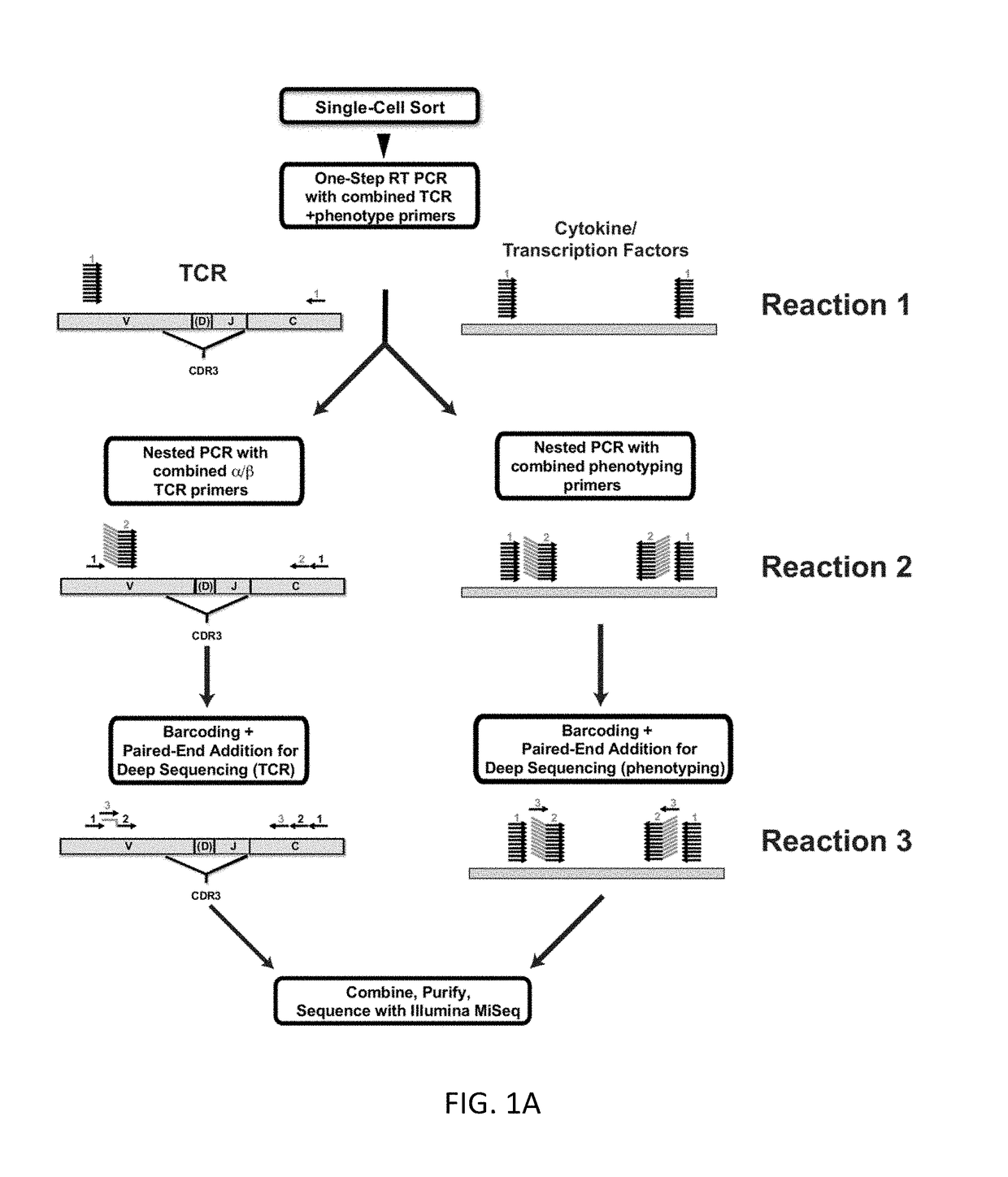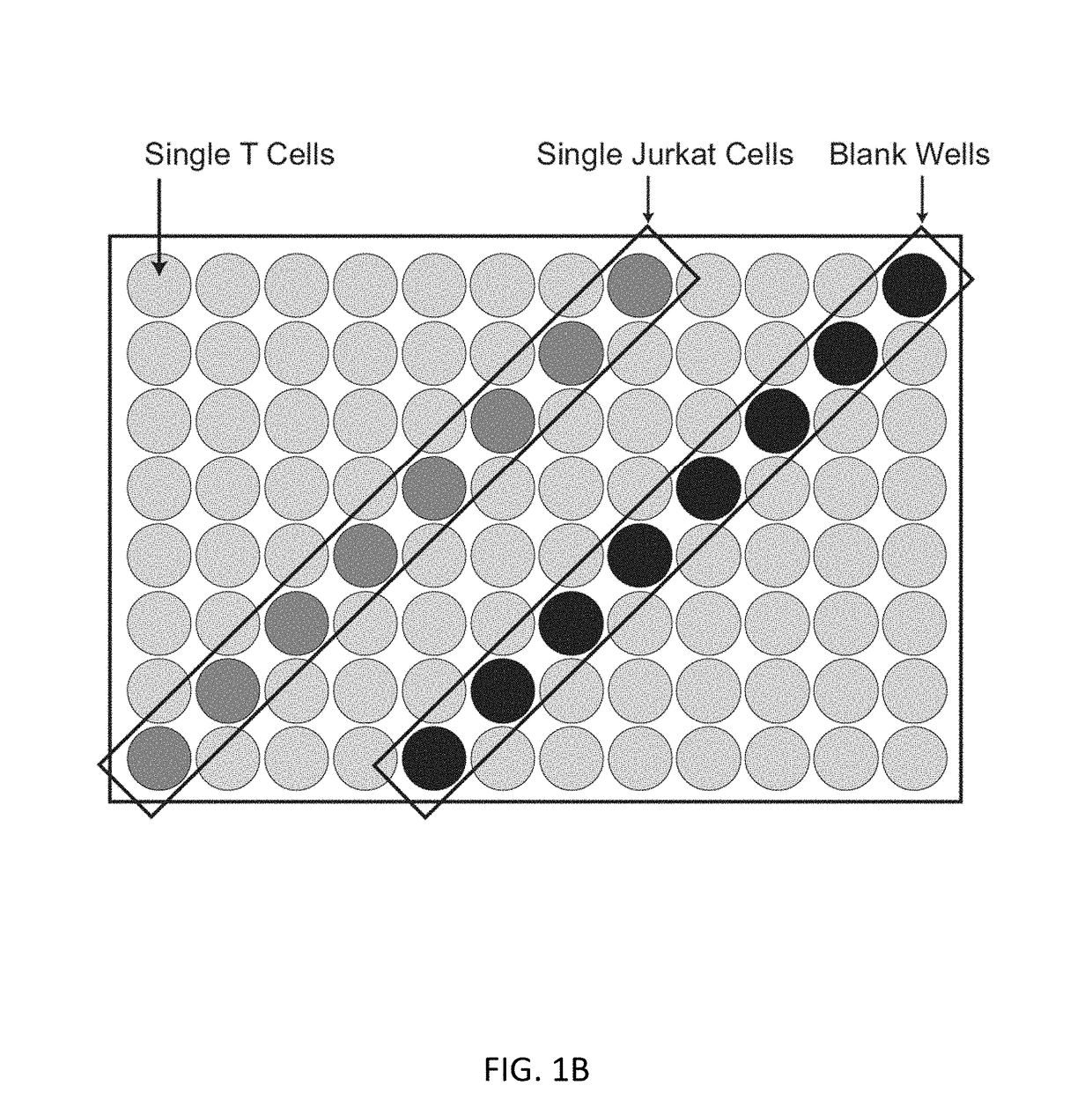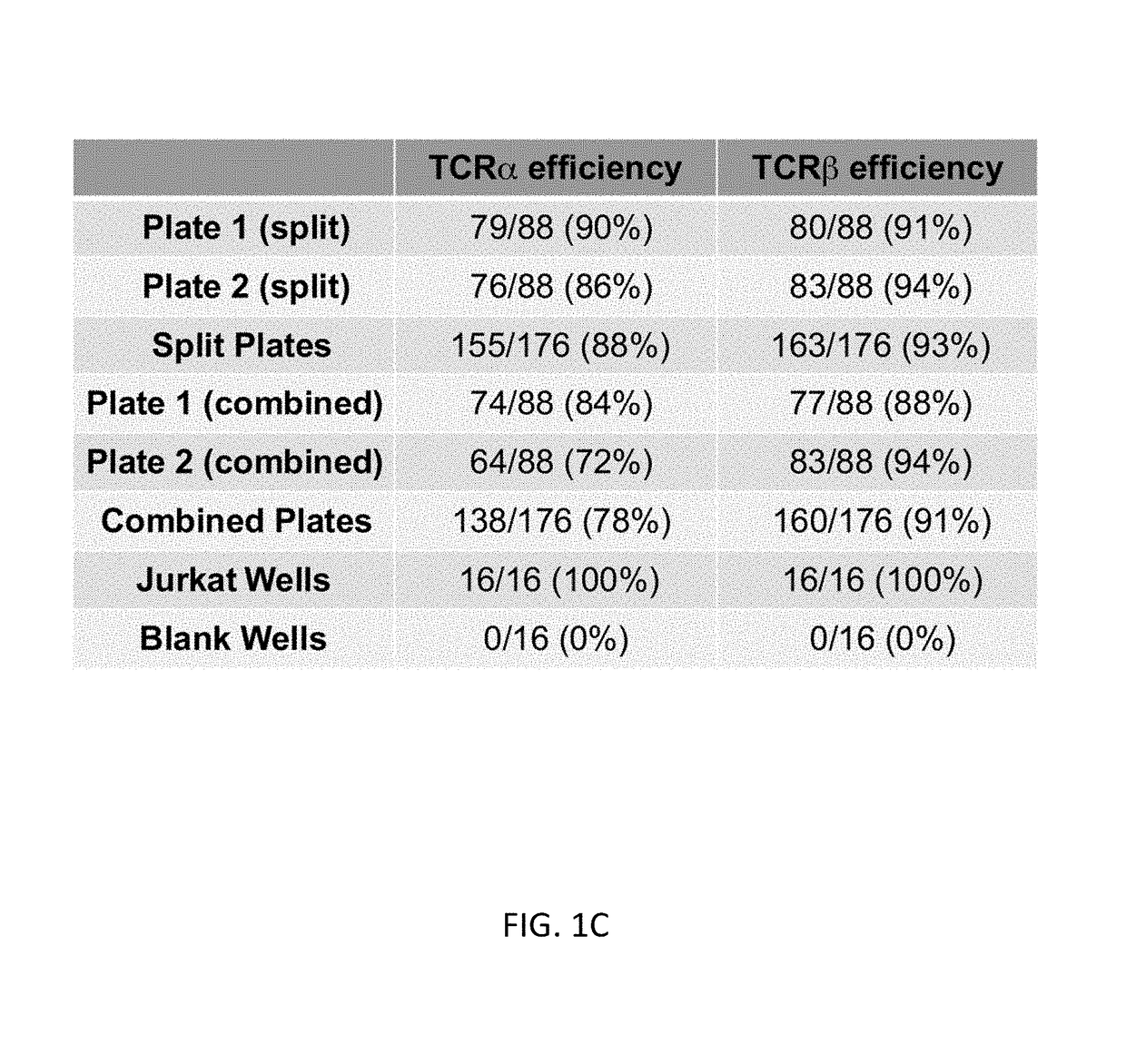Single cell analysis of T cells using high-throughput multiplex amplification and deep sequencing
a single cell analysis and multiplex amplification technology, applied in the field of single cell analysis of t cells using highthroughput multiplex amplification and deep sequencing, can solve the problem that the technology has not been applied in a high throughput manner to t cells
- Summary
- Abstract
- Description
- Claims
- Application Information
AI Technical Summary
Benefits of technology
Problems solved by technology
Method used
Image
Examples
example 1
Linking the T Cell Receptor Repertoire to Multi-Parametric Phenotyping at the Single-Cell Level
[0181]T lymphocytes recognize a vast array of different antigens through their T cell receptor (TCR) heterodimers. They have very diverse functional activities, from stimulating B cells to make high affinity antibodies to inhibiting responsiveness. In many cases, the major specificities and functional characteristics of a T cell response are not known. The TCR, which determines the T cell's antigen specificity, is central to the selection and function of T cells.8 The TCR also serves as a unique identifier of a T cell's ancestry, as any two T cells with a particular TCRαβ pair most likely arose from a common T cell predecessor. Thus, there is great potential synergy in the pairing of TCR sequences with key phenotypic markers to better define a given T cell. It is also becoming clear that T cells responding to different antigens can have very different phenotypic and functional properties, ...
example 2
Sensitivity of Detection, but not Read Count, Increased with Template Abundance
[0256]The sensitivity of the method for detection of a particular transcript was further investigated. A synthetic dsDNA was constructed that contains binding sites for the IL-17 primers (FIG. 8A). The construct was identical to the exogenous IL-17 amplicon except 15 nucleotides of endogenous IL-17 sequence was replaced with a 15 nucleotide random molecular barcode giving a theoretical diversity of 415 (>109). This synthetic construct was made by PCR using a 124 base 5′ primer incorporating the primer sequences and the molecular barcode (5′ GCG TAA TAC GAC TCA CTA TAG GGA GAC AGA CAA GAA CTT CCC CCG GAC TGT GAT GGT CAA CCT GAA CAT CCA TAA CCG GAA CAT NNN NNN NNN NNN NNN CAA AAG GTC CTC AGA TTA CTA CAA C (SEQ ID NO:1644)). To ensure that unique barcodes were not amplified, the template was first amplified by 60 cycle reaction using only the 5′ primer, and then 1 cycle was performed after addition of the 3′...
PUM
| Property | Measurement | Unit |
|---|---|---|
| length | aaaaa | aaaaa |
Abstract
Description
Claims
Application Information
 Login to View More
Login to View More - R&D
- Intellectual Property
- Life Sciences
- Materials
- Tech Scout
- Unparalleled Data Quality
- Higher Quality Content
- 60% Fewer Hallucinations
Browse by: Latest US Patents, China's latest patents, Technical Efficacy Thesaurus, Application Domain, Technology Topic, Popular Technical Reports.
© 2025 PatSnap. All rights reserved.Legal|Privacy policy|Modern Slavery Act Transparency Statement|Sitemap|About US| Contact US: help@patsnap.com



